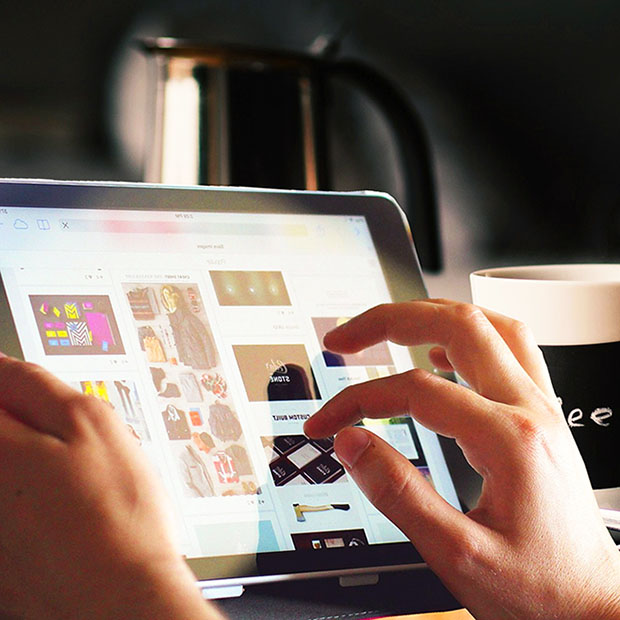Blue Light and Our Eyes

What is your routine as you get ready for bed?
Most of our nightly routines include items like brushing teeth, taking out contact lenses, and washing our faces, but how many of us also make sure to check our smartphones for any last updates before we go to sleep? This probably isn’t the best way to end the day, because the blue light in our screens has significant effects on our eyes and our internal clocks.
The Visible Light Spectrum
The colors we see make up a tiny section of the electromagnetic spectrum, with infrared rays just below what we can see and ultraviolet rays just above it in frequency. Blue light, the highest-energy light in the visible spectrum, scatters more easily than the other colors, which is why the sky and ocean look blue to us.
Artificial and Natural Blue Light
Before electricity, basically the only source of blue light we had was the sun. We are programmed to respond to natural blue light. In daylight, we feel more attentive, our memory works better, we have more energy, we react faster, and we generally feel better. Blue light is the signal to our brains that it’s time to be awake. The absence of it signals that it’s time for sleep.
The trouble is that thanks to all the computer and smartphone screens in our lives, blue light no longer only comes from the sun. When we pull out our phones right before bed, our brains get the signal from the artificial blue light that we’re supposed to stay awake, so they don’t start releasing melatonin. This makes it harder to sleep and lowers the quality of the sleep we do manage to get, contributing to a wide range of potential negative health effects.
To keep blue light from messing up our sleep cycles, we can simply avoid looking at our screens in the hour or two before bed. That isn’t always possible, though, so it might be worth it to try the night mode on your phone or look for an app that reduces blue light at night.
How Blue Light Affects Our Eyes
Blue light is right next to UV radiation on the electromagnetic spectrum, so many people are concerned that it might be harmful to our eyes in similar ways. The good news is that our screens don’t emit nearly as much blue light as the sun, and even though it’s close to the frequency of UV radiation, it isn’t UV radiation.
While you might experience digital eye strain after too much screentime, there is no evidence to suggest that it will cause permanent damage to your eyesight. If eye strain is a problem for you, computer glasses or a screen filter could help, but so does following the 20-20-20 rule: every 20 minutes, focus on something 20 feet away from the computer for 20 seconds.
Bring Us Your Blue Light Questions
If you have concerns about the effects of blue light, just schedule an eye appointment with us. We can make sure that your eyes are healthy and answer any questions you have about digital eye strain or other problems.
